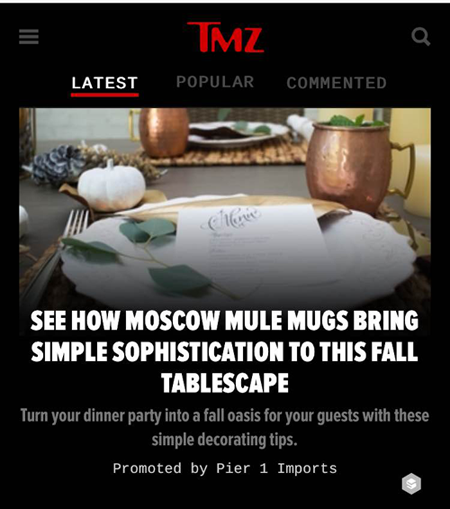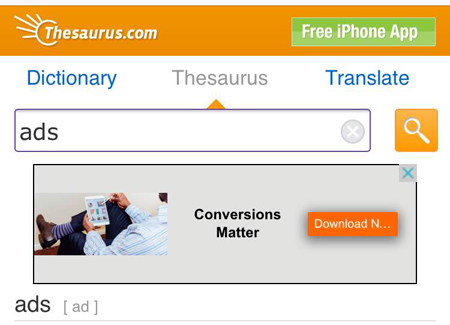How Marketers Can Overcome Ad Blocking With Stronger Content

Adam Phillips, PureCars
Following the recent launch of Apple's newest iOS 9 software, many publishers and digital marketers are left wondering how their content will reach consumers.
The new ad blocking Safari extensions allow consumers to effectively avoid unsolicited content (advertisements, scripts, trackers) on all ad platforms. Downloads of the ad blocking apps continue and it has already been estimated that ad blocking will lead to $22 billion in lost advertising revenue this year.
Instead of panicking, marketers should focus on what they do best - providing good content. Marketers have to be more intentional about getting users information that matters, faster. When researching or shopping online, customers too often encounter multiple intrusive elements - chat, popups, etc. - before they ever reach content they want. This is why users have grown to hate ads. Marketers serve users ads of little value without personalization, inundating shoppers with the wrong content at the wrong times.
Editor's Note: For example, this ad from Pier 1 about "tablescaping" is sandwiched between celebrity-gossip articles - the wrong content at the wrong time.

Even worse, this ad served on Thesaurus.com fails to include a company name - making it understandable why consumers would want to block ads altogether.

Moving forward, marketers must serve shoppers individualized content, sweeten the deal with additional offerings, and leverage consumer data to ensure that online shoppers are able to act on the ads they see. When ads are personalized, more than half of consumers see them as a welcome and engaging informational resource. Individualized ads also benefit digital marketers, as they better interest shoppers and increase conversion opportunities. In order to add value to ads, brands should:
1. Personalize Content
When shopping and researching online, users want a personalized experience. This mentality also applies to ads. In order to avoid being blocked, marketers need to serve consumers ads that are uniquely crafted with each shopper in mind. Personalize ads with content that matters most to shoppers based on their purchase history and Web browsing behaviors.
Rather than creating more personalized content to prevent ad blocking, however, many brands have turned to paywalls as an easy profit center. This is a problematic approach. When digital users are served a paywall, they are given zero interaction opportunities. Users cannot see content, engage or even click. This causes many consumers to leave the site and hinders marketers from securing the valuable consumer insights that make relevant ad creation possible. Paywalls may earn brands quick revenue, but they hinder progress of long-term solutions to ad blocking trends.
As a proper alternative, marketers can use a mix of search and display advertisements across many digital channels (social, video, Web) to serve users ads they are most interested in. There are multiple popular approaches to consumer learning - audience targeting, contextual targeting, retargeting - that marketers can use. When consumers see ads that reflect their unique interests, this truly personalized connection can stop them from hitting block.
2. Include Additional Offerings
The end goal for a digital campaign should be some kind of action from the user, whether that be a click through to a brand's site or a call to a local business - brand awareness simply isn't enough. To inspire action, marketers can include additional offerings in their ad copy. If an ad offers discounts or opportunities consumers could not get otherwise, they will be more receptive to ads in the future. For example, marketers can throw in sales prices, phone numbers for stores or very specific details about a product to entice shoppers. Although small, these additions translate to extra value and engagement.
When included strategically, additional offerings can be a great asset. Brands can align their ads with product promotions, or bolster ad relevancy during seasonal sales, for dynamic content that aligns with the sales cycle.
3. Leverage Inventory, Location and Demographic Information
Despite available technologies, many ad campaigns fail to take full advantage of consumer data to entice shoppers. What too often happens is that brands serve users ads that users cannot even act upon. Generic ads - based on price or location - alienate a significant portion of those who see them. For example, if a retailer serves ads to an untargeted audience for a product that costs more than $500, many consumers will see ads for a product they cannot afford. Over time, these shoppers will grow annoyed with deals they cannot match and eventually put up blockers. This works geographically, too. If shoppers see ads they could not possibly act upon due to locational discrepancies, blocking will be an appealing option.
Similarly, marketers have to ensure that all ads match inventory in real-time. Even if an ad is targeted and feasible, shoppers will disengage if they move to buy and find their item is out of stock. When this happens, shoppers will never see value in that brand's ads in the future, and are likely to block. Data exists for inventory, location and demographics, but it has no value if marketers fail to use it to create winning ads.
In recognizing why consumers may block ads, brands can make more informed marketing campaigns. To overcome ad blocking software, marketers have to serve consumers targeted content. These ads have to come quick, and they have to demonstrate clear value.
While many companies are not worried about ad blocking just yet, all should take note as the trend gains more traction. As one of the largest technology providers to date, marketers cannot ignore Apple's influence over consumer accessibility. From automotive to apparel, marketers within all industries must adapt to changes like the popularization of ad blocking by serving valuable ads that users would never block in the first place.
Adam Phillips is the chief technology officer at PureCars, the leading Google Premier SMB Partner in automotive. In 2007, Adam created the first Google AdWords reseller program for RealEstateBook.com. In 2011, he co-founded Tentail whose marketing automation platform for AdWords contributed to PureCars' SmartAdvertising platform.










